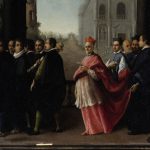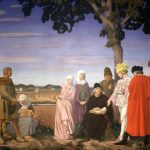Reading about the women in the Bible reveals a great deal more than simply the stories of a few individuals. Through the women’s trials and triumphs, the text offers various (sometimes contradictory) pictures of gender, family life, and relationships. Our modern understanding of gender may not translate directly onto the functions of gender in the Bible.
What are our pre-conceptions about gender in the time of the Hebrew Bible and in the Greco-Roman world? We may imagine that ancient women were universally oppressed or powerless, relegated to their roles as wives and mothers. This unit challenges these pre-conceived ideas as it seeks to understand the many roles women hold in biblical stories. We will read the stories with special attention to the power dynamics, including those surrounding gender, enslavement, and empire.
It is important to remember that these women’s stories do not necessarily reveal what was normal or even ideal about gender in the ancient Near East or the Greco-Roman world. Instead, they show us glimpses of those worlds from which the authors of the texts made meaning.
“Women in the Bible” sheds new light on familiar characters like Mary Magdalene in the New Testament and Sarah, Abraham’s wife in the Hebrew Bible. It also studies characters who are less well known to many Bible readers, such as the city of Babylon, styled as a whore in the Book of Revelation. Through the stories of these women, discover how gender can inform your reading as you explore how these stories relate to your own faith journey.



